The Wrack
The Wrack is the Wells Reserve blog, our collective logbook on the web.
The Wrack is the Wells Reserve blog, our collective logbook on the web.
Over the past few years, immature red-tailed hawks have made themselves more comfortable on this repurposed property than they ever could have when Laudholm Farm was raising broilers for market. This spring and summer have been no exception. Visitors have often remarked about a big, bulky bird on the barn, or the farmhouse, or the water tower, or the garden fence, or the circular stone sculpture out in the field. Odds are good they were all seeing the same young predator. It posed for weeks, a solo-raptor photo op.
While the campus has hosted tolerant red-tails for several years, it’s not the same bird coming back year after year. Rather, it seems to be a series of youngsters developing skills and their sense of safe boundaries while feasting on the rodents that sometimes become abundant around these old buildings.
How do we know it’s new birds? An immature red-tail reveals its youth through plumage. The namesake rectrices don’t grow out until after its first birthday, so pale-brown, lightly banded tail feathers signal “hatching year” or “second year” individuals (see below). As summer lengthens, some rust-orange tail feathers may replace the dull ones. For most red-tails, it will be the third year before the effect is complete. Once a red-tail reaches maturity, age is not obvious.
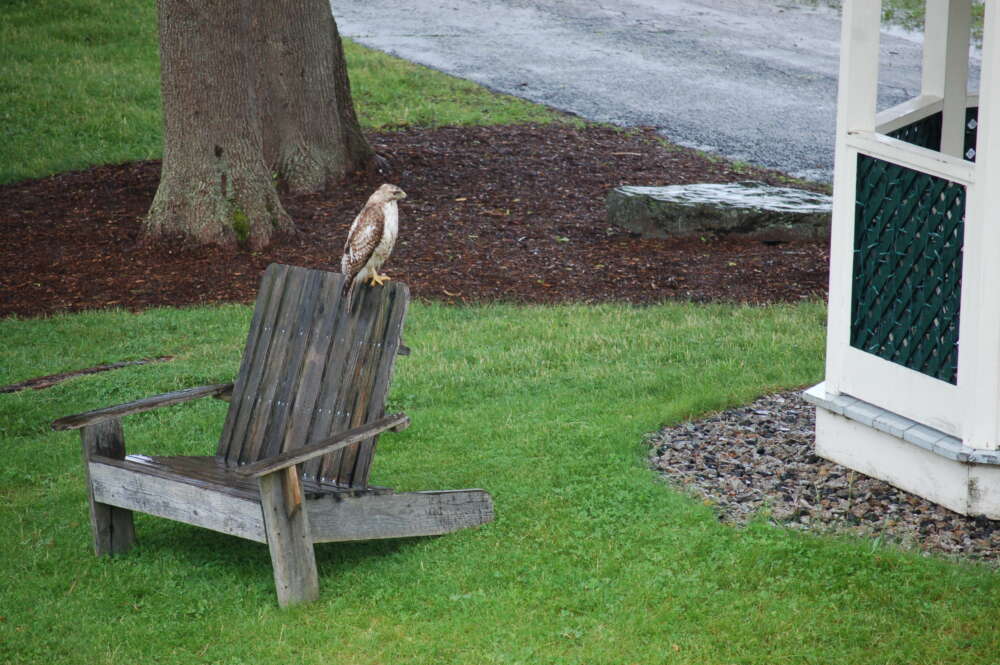


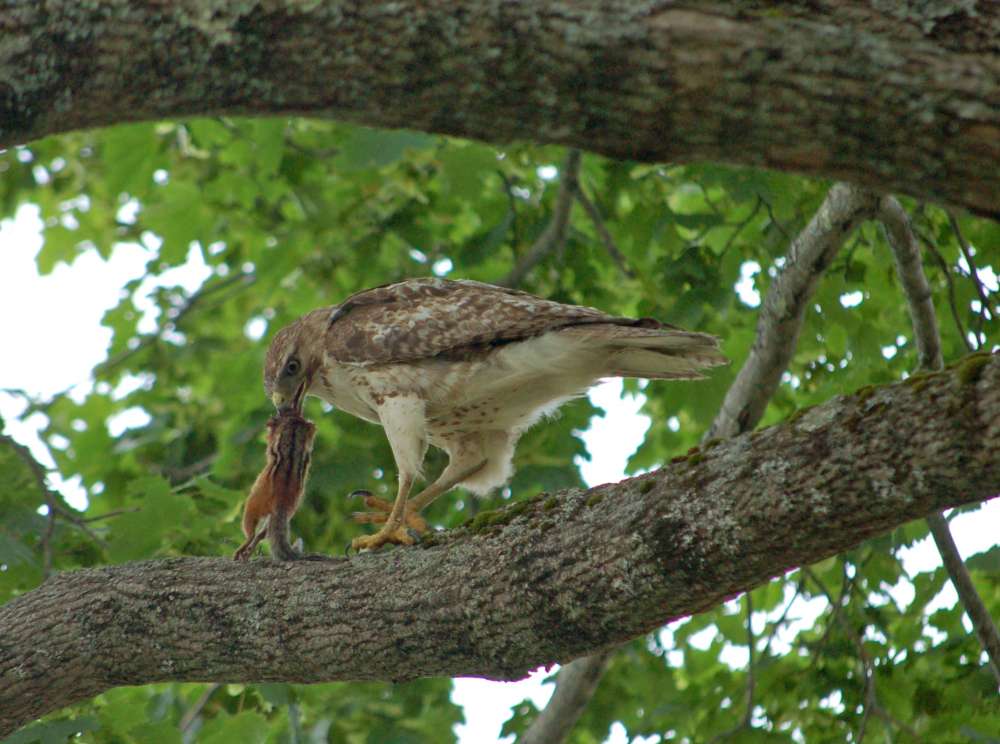
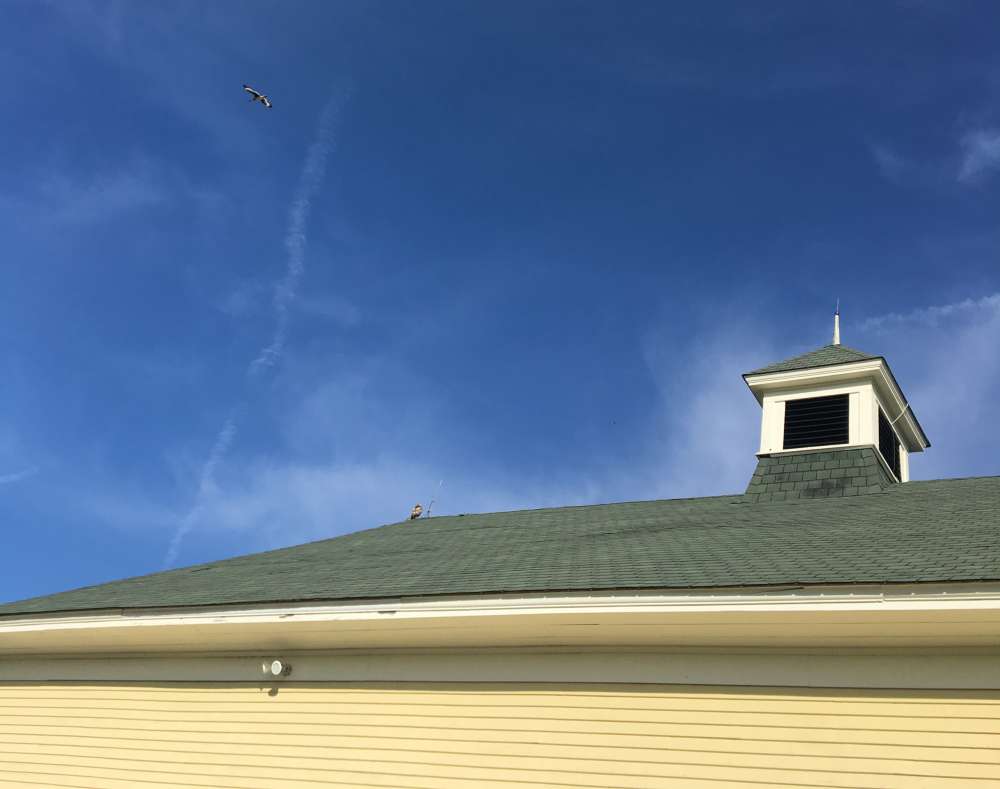
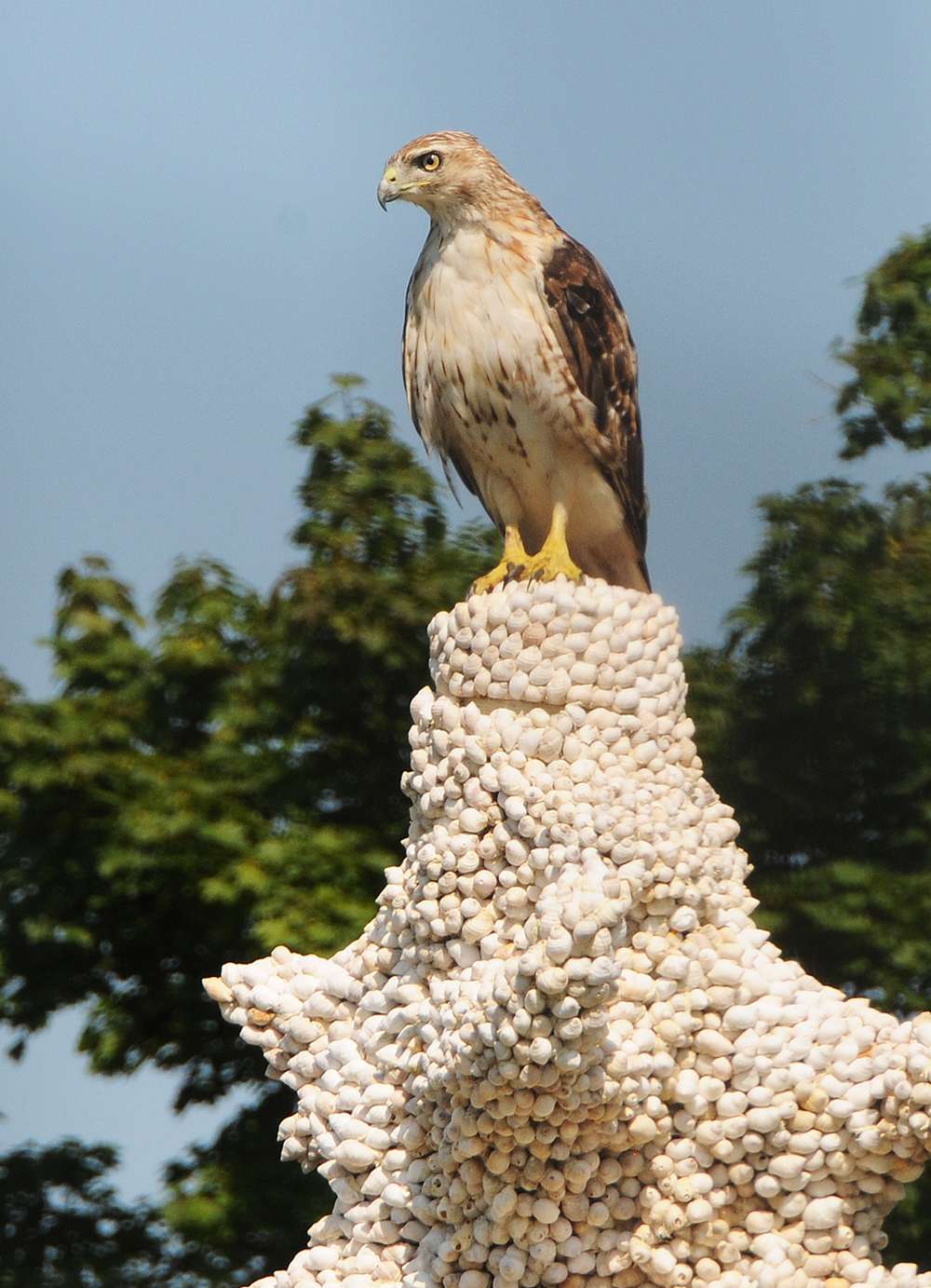
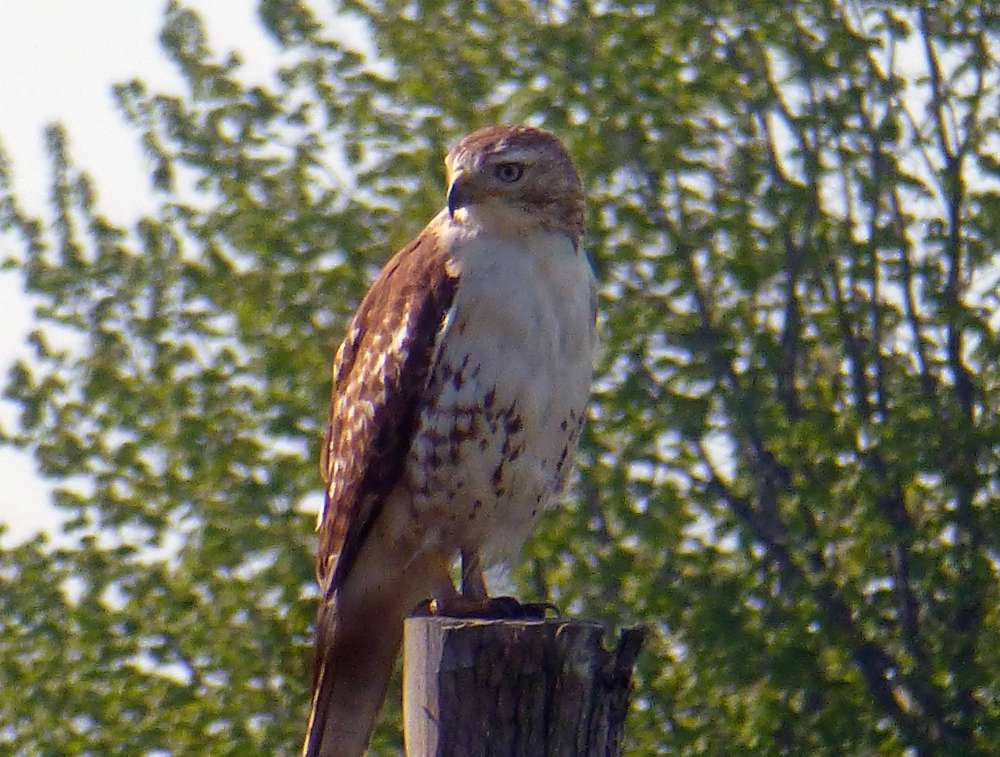
The North American Bird Banding Manual explains the standard age labels used by banders.
“Hatching Year” references the calendar year during which a baby bird left its egg.
“Second Year” is an individual known to have hatched during the preceding calendar year; the bird has its first birthday during its second calendar year of life.
“Third Year” continues the pattern; a bird hatched in 2017 and banded in 2019 is recorded as a third-year individual.
For some species and plumages, it is not possible to ascertain age precisely. Additional codes include AHY, ASY, and ATY (or “after” the hatch, second, or third year).
From Watermark 36(1): Summer 2019